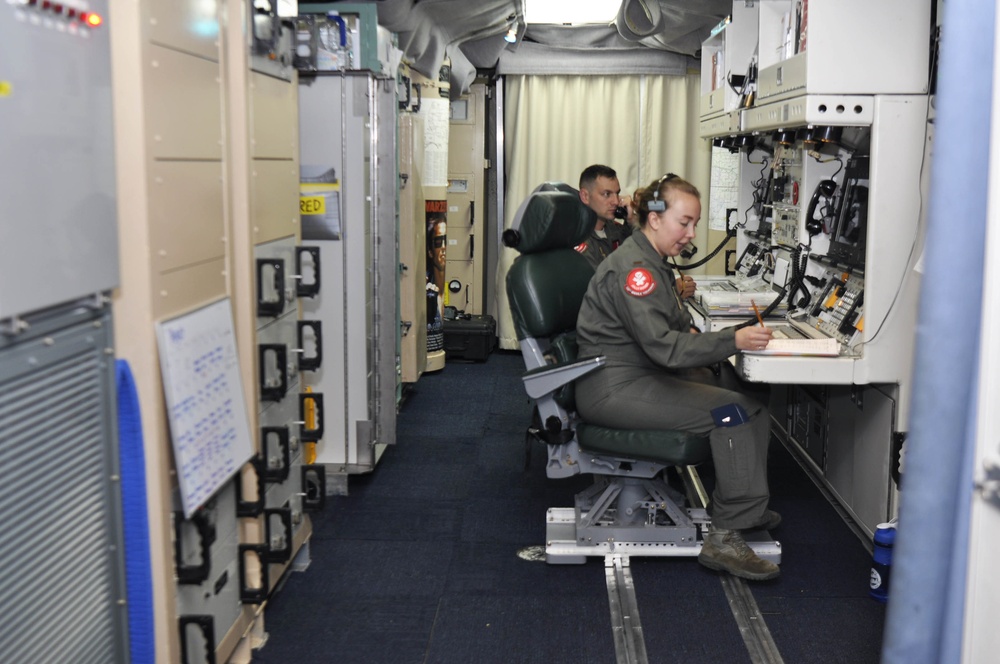In a world where nuclear weapons continue to proliferate, it’s easy to forget sometimes that our own nuclear readiness is a foundational element of our national security. Indeed, it is every bit as vital to national security today as it was during the Cold War.
The reason is that nuclear security depends on deterrence. And readiness is what deters adversaries. As retired Air Force Gen. Kevin Chilton recently explained, we must “cause an adversary decisionmaker to refrain from certain acts, under certain circumstances, out of fear that if they take those actions, they will fail to achieve their objectives and/or suffer unacceptable consequences.”
For deterrence to work, our nuclear forces must be credible. That is why Airmen and Guardians last week launched not one, but two unarmed Minuteman III (MMIII) intercontinental ballistic missiles from Vandenberg Space Force Base. These periodic demonstrations put our nuclear preparedness on display.
Yet it’s essential to recognize that those Minuteman III missiles are decades old, well beyond their engineered lifespans. Today, the Air Force desperately needs to update those missiles and the silos they launch from with modern technology. This is what the Sentinel program is all about. In a world where threats are on the rise, this program is vitally important.
Deterrence has given us relative stability among nuclear-capable states for decades, successfully preserving the world from nuclear conflict since the beginning of the Cold War. A strong deterrent posture is the best way to keep it that way. Peace through strength works. Tensions between the nuclear powers have waxed and waned over the past 80 years, but the fact that the nuclear genie has remained in its bottle proves strategic deterrence has worked.
Today, our deterrent force is under threat because of the advancing age of the nuclear triad, comprised of land-based missiles, our ballistic missile submarine force, and our strategic bombing capability. Russia and China are currently expanding both their nuclear capabilities and capacity, seeking to gain a competitive advantage over the U.S. triad. Worryingly, they have paired this modernization with increasingly aggressive behavior outside their borders—China with territorial incursions in the Pacific, and Russia through its invasion of Ukraine. Nuclear saber rattling has been a key tool employed by both nations.
Holding this aggression in check and providing U.S. leaders with viable options should circumstances demand it requires a modern U.S. nuclear triad, and that starts with the ground-based leg: the intercontinental ballistic missile enterprise.
ICBMs are on alert and have been, 24/7, since 1959. The Minuteman III ICBM enterprise, engineered for a 10-year life span and fielded in the 1970s, is still in place. They are sitting in launch silos built in the 1950s and 1960s. The last Minuteman IIIs were produced and fielded in 1975. Numerous life extensions have kept these missiles viable, but they will not last forever. Readiness in the future demands that they are replaced as soon as possible. A 50-year life for a system originally designed for 10 marks a tremendous return on investment, but failing to replace it will make that success moot.

As a former MMIII wing commander, I know that the threat we face and seek to deter is both credible and potent. I also know that the force we are operating is rapidly reaching the end of its viability. Our nation’s top leaders demand capable, competent options. American citizens deserve a modern, sustainable strategic deterrent capability.
The United States has not executed a full ICBM recapitalization effort in decades. A full reset, which is what we need today, is not simple or inexpensive. Indeed, once this effort got underway, it became clear that the original infrastructure is in need of even more rework than originally forecast, driving up the cost and triggering a Nunn-McCurdy breach, which means the price has increased more than 20 percent.
The Department of Defense underestimated the scale of the challenge. For example, the silos and launch control centers, where the operators sit to control the missiles, are connected by a discrete network of copper cabling. Program officials recently discovered that the entire network must be replaced. It has been slowly degrading since the 1950s. We are also running out of replacement cabling, making routine maintenance difficult. And it’s not a small network: Some 8,000 miles of new cabling is needed to be produced and laid underground.
With 450 missile silos, 45 alert facilities with launch control centers, and hundreds of missiles, this is among the most challenging efforts our nation has ever undertaken. It’s also a non-negotiable undertaking.
Our nuclear missile force has helped secure our nation for more than 65 years. The daily headlines tell us we still live in a dangerous world. Russia invading Ukraine, China pressing its neighbors in the Pacific, Iran pursuing nuclear arms, North Korea threatening us and our neighbors. Undersecretary of Defense for Acquisition and Sustainment William LaPlante was right on the mark when he recently explained: “The modernization of our triad is the top priority of the Defense Department.”
Deterrence and a strong defense do not come at discount prices. The cost of being unprepared, however, is always far greater.
Retired U.S. Air Force Col. Jennifer Reeves is a senior fellow at the Mitchell Institute for Aerospace Studies.
